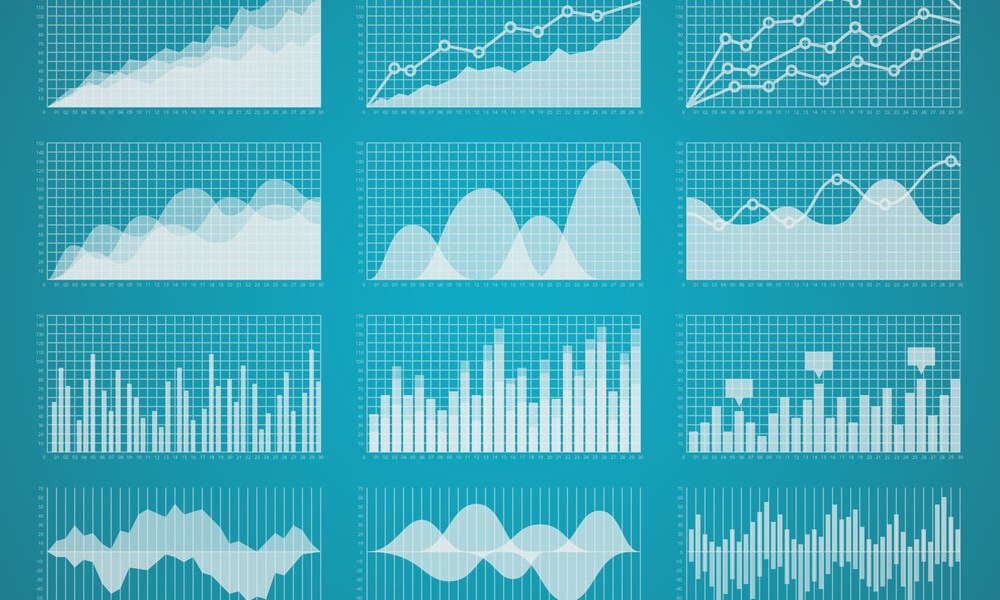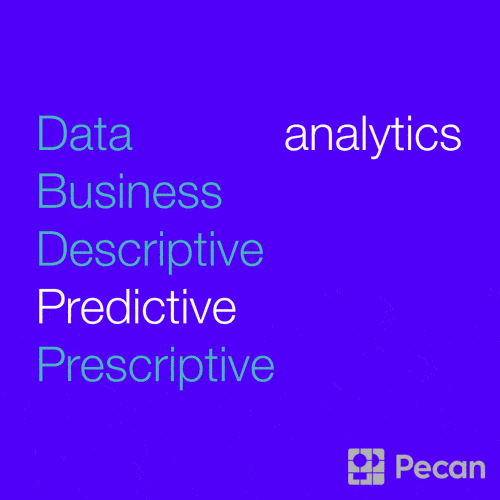Welcome to our 3-Minute Nutshell series, where we answer FAQs about predictive analytics in just a few minutes of your time! Get up to speed on key ideas you need to know to start your business’s journey toward AI success.
Jump ahead in the series:
- Is predictive analytics the same as data science, machine learning, and AI?
- What skills do you need to do predictive analytics?
- Can predictive analytics be automated?
- What are the best uses for predictive analytics in business?
- Is predictive analytics accurate?
What Is Predictive Analytics?
Predictive analytics is the process of identifying meaningful patterns in historical data that can be used to mathematically predict what’s likely to happen in the future.
Of course, regular “data analytics,” aka “business analytics,” also looks for patterns in historical data. You might look at data on customer transactions to find out which products were most popular in a certain season last year. You could also determine what level of customer activity correlated with churn in the past.
Those are definitely meaningful patterns in data. But while finding patterns that existed in the past might be helpful in some ways, those same patterns might not hold true for the future. These simple connections in customer behavior in 2021 may not hold true for brand-new customers in 2022.
Moreover, those patterns connect just a couple of variables (product popularity + season, customer activity level + churn). Human brains and basic analytical tools are adequate for spotting those simple patterns. But the minute things get more complex or future-looking, AI-powered predictive analytics shows its power.
Predictive analytics finds patterns in complex data that can be used to predict future outcomes.
Predictive Analytics Uses Past Data to Provide Information About the Future
The most important distinction about predictive analytics is its ability to look into the future. But how does it do that?
To feel confident about your predictions and the decisions you’ll make with them, you need a deeper level of analysis that can grasp all the relevant variables. Additionally, maybe there are 10, 20 or more variables that actually determine the outcome you want to predict.
Beyond detecting patterns with these additional variables, you also want to be able to see how each of those variables contribute to what will happen in the future. Confidence only increases when predictions aren’t coming out of a black box.
To glimpse what’s most likely to happen in the future, predictive analytics techniques take your historical data and dig deeper. They seek more complex patterns and relationships among all the important variables. Predictive analytics platforms build mathematical models that show how these variables relate to each other. They then use those models to generate predictions about what’s likely to happen in the future.
These models are based on the state-of-the-art methods developed by thousands of researchers and practitioners who refine artificial intelligence and machine learning techniques. (We’ll talk more about the role of AI and ML in analytics in an upcoming post!)
And in the case of Pecan, modeling methods are refined with the results of thousands of models built for customers, using business goals as the key measure of success.
Descriptive and Prescriptive Analytics: Where Do They Fit?
You might have also heard two other terms paired with analytics, other than “predictive”: “descriptive” and “prescriptive.” Descriptive analytics refers to the kind of analytics we described first in this article. It’s an effort to summarize and explore your data about what happened in the past. It’s also the foundation on which more advanced analytical methods are built.
The name of “prescriptive analytics” is pretty revealing. It’s a method to determine the right next action to take based on your data. For example, a recommendation system on an ecommerce site that suggests more products is “prescribing” next options for you to pursue, based on your browsing history.
All of these analytic methods — descriptive, predictive, and prescriptive — have their place in a business’s data strategy. However, many businesses’ data efforts have stalled at descriptive analytics. Spreadsheets and BI dashboards dominate their toolkits and offer only windows into the past.
Considering jump-starting your data engine and adopting a future-driven perspective? Stay tuned for more of this blog series. We’ll share more about predictive analytics, how it works, and how it can benefit your business. You can also grab our guides to the basics of predictive analytics and to choosing a strategy for building your team’s predictive capabilities.
Ready to start exploring what predictive analytics can do for your business? We’d love to help you launch your journey into AI. Augment your team’s capabilities by making machine learning available to your data and BI analysts through our accessible, accurate and powerful platform.
We can assess your predictive readiness with a quick, easy use-case consultation. We’ll help you find the best way to get future-ready.





